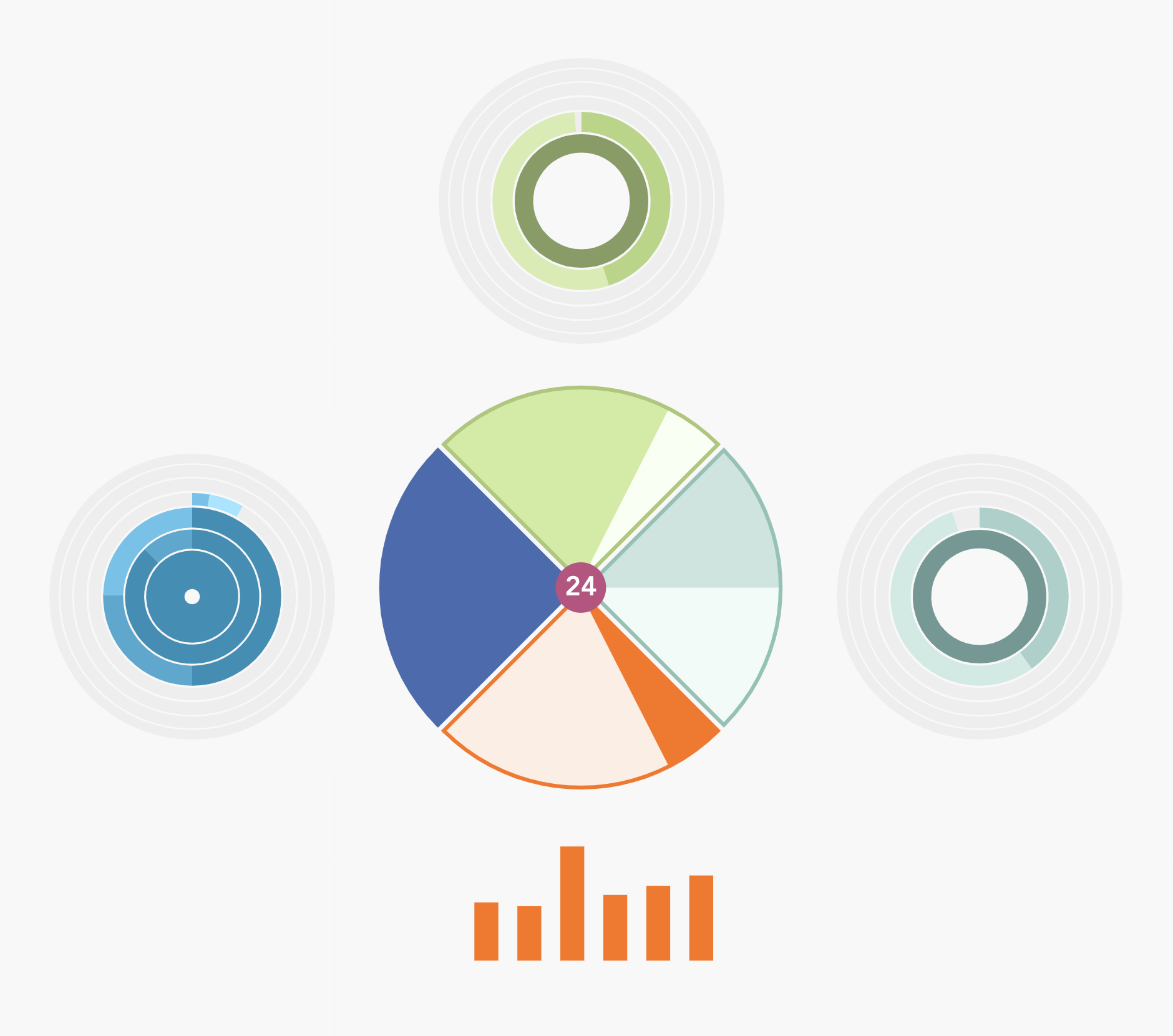The Kanshudo Blog
Your Japanese Mastery Level vs Your Kanji Mastery Score

In this post we're going to dive a little deeper into the relationship between your kanji mastery score and your Japanese mastery level. Long-time users of Kanshudo will be very familiar with the kanji wheel and kanji mastery score - how exactly do they tie up with our new comprehensive Japanese mastery level?
Your kanji wheel and kanji mastery score

The kanji wheel is a visual summary of your progress with all kanji. We divide kanji (and kana) into sets, and visually represent those as rings in a wheel - the hub of the wheel represents kana, and the most frequently occurring and useful kanji are nearer the center.
We shade the rings in the wheel based on our assessment of your knowledge of each kanji individually. We rate your mastery of a specific kanji from 0 (no knowledge) to 4 (fully mastered). Each ring of the wheel shows you how many kanji you have with each score.
Your kanji mastery score then sums up your knowledge of all these kanji by assigning weights to each ring - rings nearer the center are given more weight, because the kanji are more important. A score of 95 means you have fully mastered all 2136 Joyo kanji. (To get to 100, you also need to know kanji outside the Joyo, such as the Jinmeiyo.)
Your Japanese mastery level

Your Japanese mastery level is a number from 1 to 70 which represents your overall Japanese progress - not just kanji, but also vocabulary, grammar, and general experience.
In your [dashboard](/dashboard), the graphic at the top represents your progress through your current mastery level. The number in the center is your level - here, 24. Each 'wedge' is shaded to show your progress through that element.
So in this example, the wedge on the left (kanji) is fully shaded - it shows you have completed the kanji requirement for mastery level 24. The top wedge (vocabulary), is about 80% shaded; the right wedge (grammar) is about half shaded; the lower wedge (experience) is about 20% shaded.
So how do my kanji / word / grammar mastery scores relate to my Japanese mastery level?

Each set of ten mastery levels corresponds to one ring in each wheel. So for example, mastery levels 10 to 19 (each of which starts with a '1') corresponds to ring 1 - the first actual ring in each wheel. (In the kanji wheel, the central circle is for kana.)
Mastery levels 20-29 correspond to kanji / words / grammar with usefulness level 2. If your mastery level is 24, you are working on the second ring in each wheel.
The rings show you how many items you need to study, and what your mastery score is for each item. From those numbers we calculate an average - your 'average mastery' for the ring. We require you to reach average mastery of 3 (out of 4) to progress from one ring to the next. In other words, to complete one set of ten mastery levels, we require you to get your average mastery for the kanji / words / grammar in that set to 3.
So to progress from one mastery level to the next, you need to accomplish 10% of that - you need to increase your mastery of kanji / words / grammar by 0.3.
We require you to make progress in all dimensions in parallel. Even if you increase your kanji mastery by more than 0.3, you won't progress to the next mastery level until you also increase your grammar and vocab mastery by 0.3, and accumulate a certain number of study points.
Kanshudo is your AI Japanese tutor, and your constant companion on the road to mastery of the Japanese language.
To get started learning Japanese, just follow the study recommendations on your Dashboard.
You can use Quick search (accessible using the icon at the top of every page) to look up any Japanese word, kanji or grammar point, as well as to find anything on Kanshudo quickly.
For an overview, take the tour.
